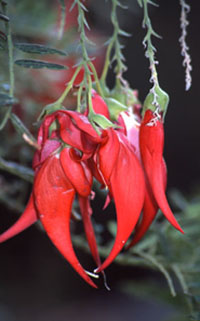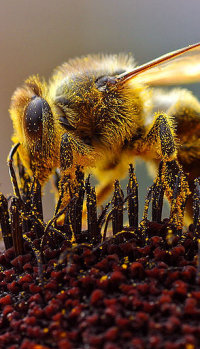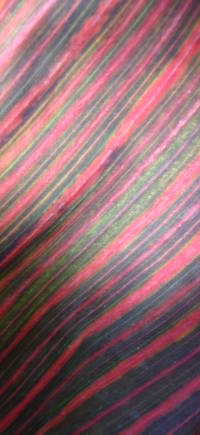I, like anyone else who has heard of it, am a massive fan of TED. To actually hear some of the world’s most inspirational, influential and downright clever people speak about topics for which they have a deep passion is simply phenomenal.
The next stage of TED evolution has begun with TEDx – a program of local, self-organized events that bring people together to share a TED-like experience. So expect a lot more content coming on any topic you may be interested in.
In this TEDx Talk, Jane Poynter tells the story of BioSphere2 and her experiences in relating to the ecosystem afterwards. Giving you a real sense of the connectivity of all things, this is a must-see for anyone interested in the natural world.
Thanks to Paul Reynolds for the heads up!

 Spotted in Saturday’s
Spotted in Saturday’s  Honey bees are the bee’s knees. They make beeswax, propolis and royal jelly. They also make some of the best tasting stuff on the planet – honey – a complex food containing many minerals and healing properties and contains 75% sugar. You’ve probably heard of it. You should be eating some every day. Bulk buy it – it never spoils.
Honey bees are the bee’s knees. They make beeswax, propolis and royal jelly. They also make some of the best tasting stuff on the planet – honey – a complex food containing many minerals and healing properties and contains 75% sugar. You’ve probably heard of it. You should be eating some every day. Bulk buy it – it never spoils. Terrific work is happening in the recording of traditional food knowledge (TFK) from indigenous people around the world. TFK refers to the cultural tradition of sharing food, recipes and cooking skills and techniques and passing down that collective wisdom through generations. I see this as a very important for two reasons:
Terrific work is happening in the recording of traditional food knowledge (TFK) from indigenous people around the world. TFK refers to the cultural tradition of sharing food, recipes and cooking skills and techniques and passing down that collective wisdom through generations. I see this as a very important for two reasons: You can tell that summer and the festive season are here. It’s difficult to miss with the tell-tale red lights of the pohutukawa (Metrosideros excelsa) signalling the way. The pohutukawa is also known as the New Zealand Christmas Tree because of the beautiful crimson display that flares at the end of November and right through January.
You can tell that summer and the festive season are here. It’s difficult to miss with the tell-tale red lights of the pohutukawa (Metrosideros excelsa) signalling the way. The pohutukawa is also known as the New Zealand Christmas Tree because of the beautiful crimson display that flares at the end of November and right through January.